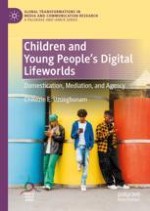This book explores the ways in which adolescents in Nigeria domesticate technology and the role of digital gatekeepers such as parents, guardians, and teachers in their digital lifeworlds. Using a child-centred framework, what emerges is a rounded and textured analysis of how technology fits into pivotal aspects of the lives of teenagers. Here, teens are understood as ‘actors’ rather than just users of media and technology. The digital lifeworlds of young people in advanced economies of the Minority World are well researched. In contrast, research focusing on pre-teens’ and teenagers’ digital practices and participation in Majority World such as Africa, is still fundamentally narrow. The book is relevant to fields like sociology, media studies, youth studies, mobile media studies, African studies, and global media studies.
